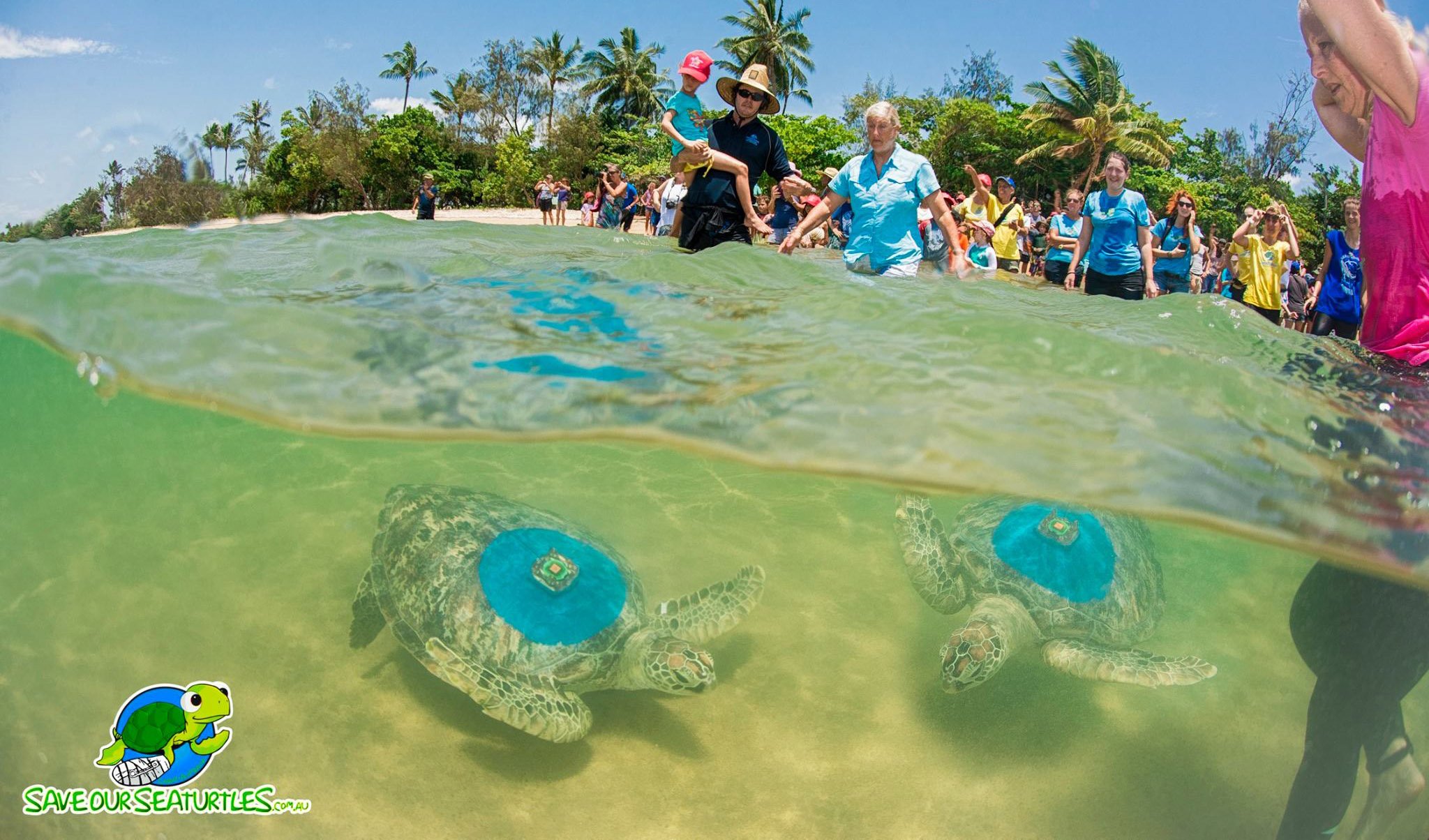How to save a (turtle’s) life

MEET ELLA, A JUVENILE green turtle who was found, floating and close to death, off the beachside Cairns suburb of Yorkeys Knob.
She’d been struck by a boat and the propeller had left her with her lungs exposed and other life-threatening injuries, including cuts to her head. After being carefully transported to Marlin Coast Vet Hospital at nearby Trinity Beach, where she received emergency first aid, she was taken to the mainland facility of the Cairns Turtle Rehabilitation Centre for intensive care. There the critically ill reptile needed to be force-fed twice a week, was treated with antibiotics twice daily and barely moved for two months. But finally all the attention began to pay off.
“Ella then started eating fifty squid a day and demanded a lot of attention,” recalls Jennifer Gilbert, the rehabilitation centre’s co-founder. Another two years of careful care and attention followed for Ella at the centre’s Fitzroy Island facility until last year, when she was deemed well enough for release, back at a safe location not too far from where she’d been found.
A satellite tracker fitted before the young turtle’s release showed that she went straight back to normal feeding and behaviour and Jennifer and her colleagues at the centre finally breathed a sigh of relief.
An ongoing struggle
Ella is just one of the rehabilitation centre’s many recent success stories. Each year the centre successfully releases up to 100 rescued and rehabilitated turtles back into their natural habitats.
Like Ella, many have suffered from clashes with boats. Others have ingested marine rubbish, become entangled in fishing apparatus or have been attacked by crocodiles. Affected turtles are easy to spot – they suffer ‘floaters syndrome’, where air becomes trapped under the shell, making it impossible for them to dive normally to feed.
All rescued turtles receive an initial veterinary evaluation at the Marlin Coast Veterinary Clinic, including blood tests and X-rays. They are then transferred to the Cairns-based rehabilitation facility, which is purposely designed to treat ill and injured turtles. The turtles are kept in this facility until they are healthy enough to either be released or taken to the rehabilitation centre’s Fitzroy Island facility, south-east of Cairns.
Recovery for rescued turtles can take up to 24 months, although the typical recovery time is about six months. After recovery a Sirtrack satellite tracker is attached to the shell and the turtles before they are released in the region they were found and tracked to determine the success of their rehabilitation.
Data is recorded and transmitted when the turtles surfaces to breathe. The raw published data is processed then plotted against high resolution maps in ESRI ArcGIS.
A new Turtle Rehabilitation Centre opened in early 2013 with more room, cleaner water and bigger tanks, which resulted in an increased success rate for the rehabilitation of the reptiles – up from 30% to 85%.
“Going from 2 volunteers, 1 turtle and 1 centre, to over 150 volunteers with people emailing daily to help out is our greatest achievement,” Jennifer says. “They can go anywhere in the world but they choose to come to Tropical North Queensland to work with the Cairns Turtle Rehabilitation Centre.
A volunteer’s average day varies from feeding to siphoning and netting the enclosures. “Each turtle is unique and just like humans,” Jennifer says. “They have their favourite foods.”

A close up of Ella the turtle. (Image Credit: Christian Miller)
Community Involvement
The rehabilitation centre relies heavily on community involvement.
People are encouraged to come to educational talks at Fitzroy Island to learn about what the turtles suffer and to talk to other people about the threats and what they can do to help marine turtles before it is too late.
The centre also offers more immersive experiences through their volunteer programs. “Tourists can either email to volunteer through Oceans 2 Earth. Additionally, they can look at their back yard and what things they can do to make sure the threats to turtles may be lowered. Report any strange activity that may be illegal or report a sick or injured turtle, the sooner it gets to rehabilitation the better chance it has,” Jennifer says.
Beyond the centre itself Jennifer says that living a more environmentally friendly lifestyle makes a big difference. ”Reduce, recycle, remove and clean. Marine turtles get entangled in discarded plastics and general rubbish on the beaches, shorelines and in the water.” Tourists can visit the centre for educational tours each day at 1 pm on Fitzroy Island at the rehabilitation centre.

Barney and Betty being released after their rehabilitation. (Image Credit: Christian Miller)
Brought to you by Tourism Tropical North Queensland.




